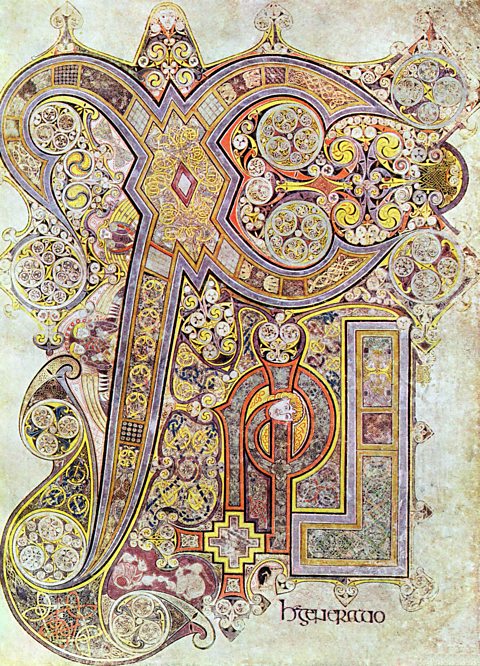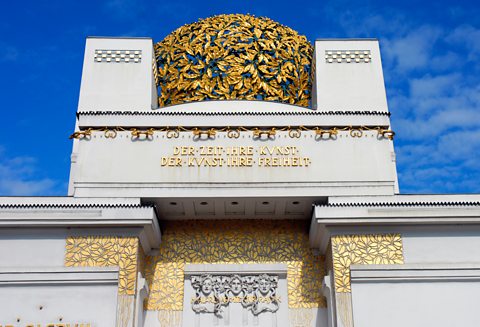Elaboration

The Book of Kells (c.800AD) contains the four gospels from the New Testament of the Bible.
On many of the pages letters and words are presented in intricate patterns rather than as plain text.
This page from the Gospel of St Matthew contains the text XPI autem generatio
.
The first three letters have been elaborately decorated with swirling shapes, spirals, organicIrregular, flowing or relating to nature. In art and design, organic shapes, forms or lines are imperfect as opposed to perfect geometric elements. forms, animals and even a human head.
The book was created as a treasure to be admired as well as read. The elaborate detail shows the time and skill that went into creating the book.
Variety through elaboration adds interest so that the image holds the viewer's attention.


The Secession Building, (Joseph Olbrich, 1897) in Vienna is made up of a series of white, cubic forms. The stone has a smooth finish and the structure could easily have seemed uniform and uninteresting.
Variety is created through contrast between the pure white building and the gold decoration. Variety through elaboration is added by the hollow dome of golden leaves. This adds rich texture and draws the eye.
The elaborate gold leaf pattern is continued through the decoration on some of the edges and corners of the main structure.

The composition of George Seuratãs Bridge at Courbevoie (1886-87) is quite simple. The figures and trees are almost silhouettes and the landscape and water are blocks of colour.
Rather than add variety through realistic detail, Seurat creates elaborate texture and colour through his PointillismA painting technique in which images are created from small, distinct dots of colour rather than by mixing or blending colours together. technique of applying small dabs of paint to build up images.